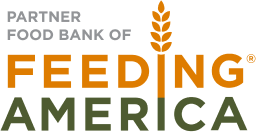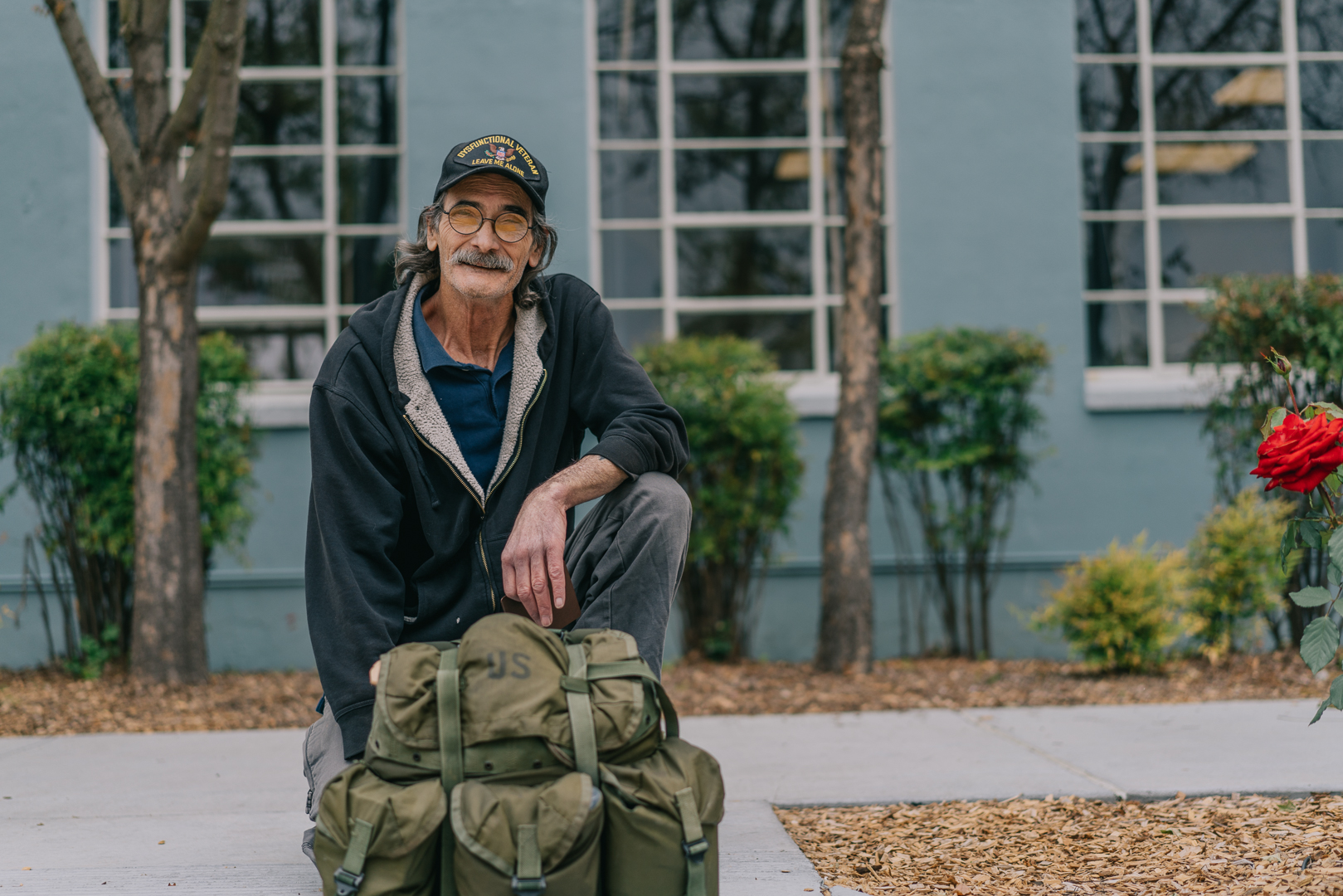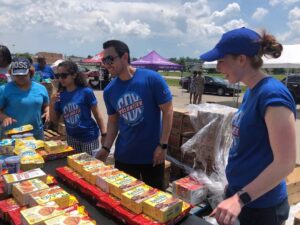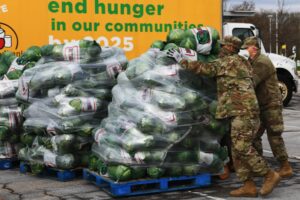One in five families served by food banks has a veteran member
Why we see so many veterans in our lines
By: Emily Gallion, Grants and Metrics/Advocacy Manager and Caitlyn McIntosh Outreach/SNAP Lead
This Veterans Day, as we celebrate those who have served our country, it is important that we acknowledge a grim truth: We have failed to support some of these brave citizens upon their return home.
Although food insecurity among veterans as a whole, when controlled for other demographic factors, is roughly the same as the general population, some groups face increased rates of food insecurity. For veterans of wars in Iraq and Afghanistan, some studies report food insecurity rates as high as 27% — more than double that of the general population.
There are several hypotheses to explain why this particular group of veterans struggles more upon their reentry into civilian life. It may be related to the transition to an all-volunteer force around this time. While the end of the draft was seen as a win for personal freedoms, it has also contributed to a major shift in the makeup of the armed forces.
Some social scientists believe that an all-volunteer military means that those who enlist are more likely to come from complicated backgrounds, such as growing up in poverty or a troubled family life. While these individuals may find opportunity in military service, they may also have a limited support system upon returning.
One 2015 study found that the shift to an all volunteer force was associated with lower socio-economic status, lower educational attainment, and higher rates of mental health problems, which are associated with poorer social and economic outcomes.
The coronavirus pandemic has not made things any easier for those already struggling. During its course, we have received countless phone calls from individuals who are seeking food assistance for the first time, many of them veterans. Many of these people are living with disabilities, limited mobility, and have not sought food assistance before due to the associated stigma.
Anecdotally, we have heard from veterans who are hesitant to ask for help due to this stigma. Many express pride in their ability to sustain themselves and reluctance to take food from somebody who might “need it more.” We also hear from veterans who are angry at the larger system for failing them after they have served their country. Navigating benefits systems can be difficult and confusing, which leads them to call us.
While The Foodbank offers several direct service options, our mission is to acquire and distribute food to 116 partner agencies in the Miami Valley. In 2018 we began a partnership with the Dayton Veterans Administration Medical Center to provide food to veterans in the organization’s care.
The Foodbank and the Veterans Administration Medical Center are both located within 20 miles of Wright Patterson Air Force Base, the only active military base in the state. According to Census data, there are an estimated 9,085 veterans in our home city of Dayton, OH, where nearly 30% of the city’s residents live in poverty. In Montgomery County, Black individuals make up 20 percent of the total population, but make up 39 percent of the population living in poverty.
While data regarding food insecurity in veterans is hard to come by, we do know that risk factors such as being nonwhite and living in poverty are high factors in the general population, which leads us to believe our local veteran population is vulnerable as well.
We regularly refer clients who identify as veterans to the Veterans Administration Medical Center for additional services. The Veterans Administration Medical Center Food Pantry, a Foodbank program, serves an average of 238 veteran households each month. Check out the VAMC Facebook page for up-to-date information on pantry hours.
Visitors to the Veterans Administration Medical Center Pantry are not required to be currently patients of the VA. Veterans must bring a copy of their DD-214 to be served and meet current income guidelines to receive food from The Foodbank.
Partnerships with agencies like the Dayton Veterans Administration Medical Center are critical to The Foodbank’s vision that no one should go hungry. For more information on the services they provide, visit their website at https://www.dayton.va.gov/.





No comment yet, add your voice below!